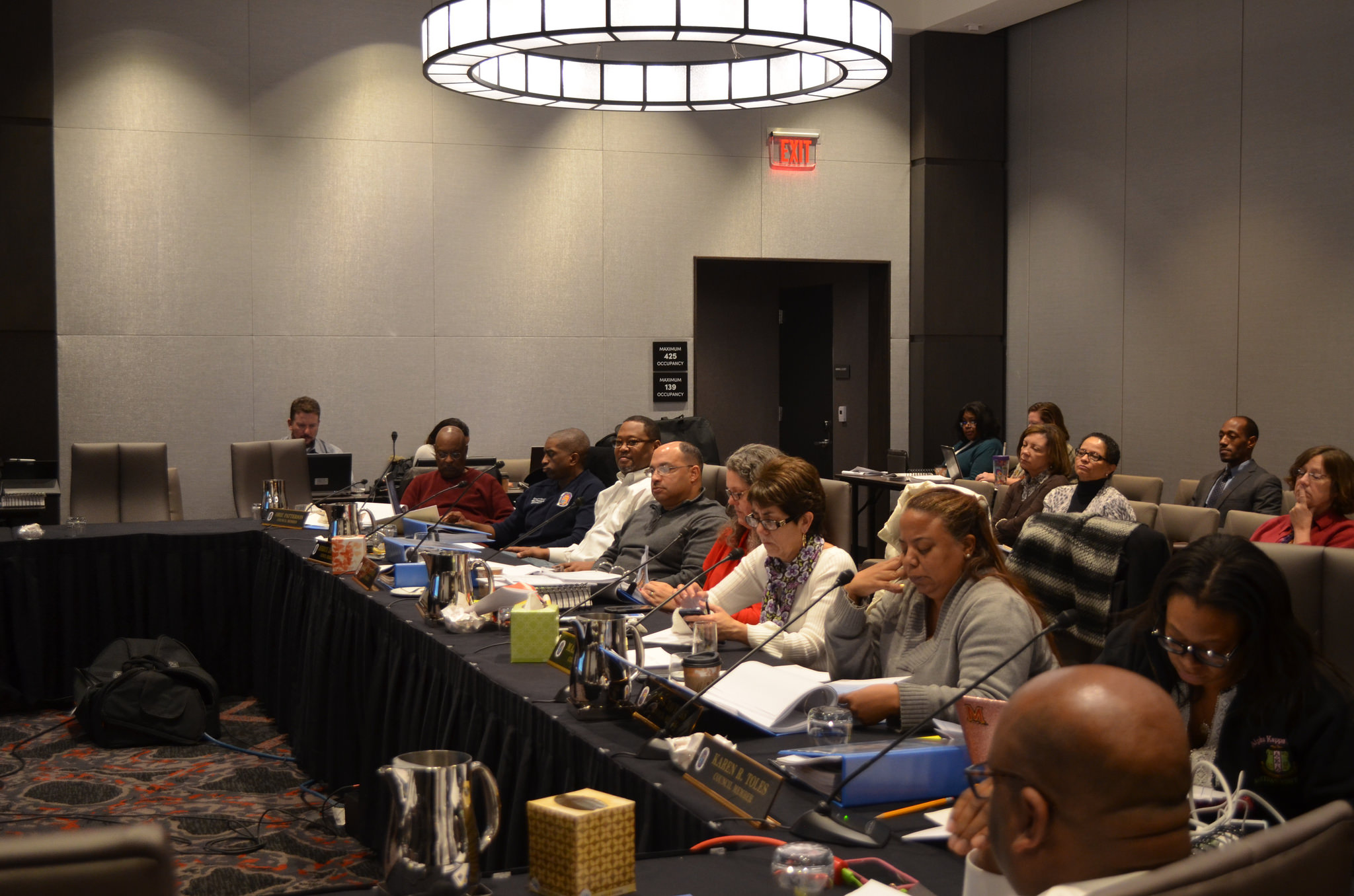‘Start Strong’ Delivers
Prince George’s County Council Retreat Aggressively Prepares For Big 2018
The Prince George's County Council 2018 retreat at The Hotel in College Park, Md (Jan. 3-5)
The three-day open door retreat held Jan. 3-5 by the Prince George’s County Council was not the first of its kind. But given what 2018 portends, this year’s gathering may be the council’s best huddle to brace for internal renewal and a tough session facing the issues.
That doesn’t mean it's bad news.
The county is on an upward trajectory economically and in development. Over 10,600 new jobs were created here in 2017. The green light for the purple line, the regional medical center and the expanding commercial tax base, along with solid development around education centers adds to the growth trend that leaders seek to build upon in 2018.
But there’s a lot to do.
“I would say that the top five issues that we’re addressing [during this retreat] are education, educational facilities, health, WMATA and money – as per the Kirwin Commission,” said County Council Chair Dannielle Glaros (D-Dist. 3).
The council and county leaders face a number of challenges this session including potential toll fees on 495 and 295, adequate and balanced education funding, expanded work with transit oriented development and close monitoring of the progress of the new regional medical center.
Among the highlights were presentations regarding education as an economic engine for Prince George’s.
David Iannucci. PHOTO: JOHN EDMUNDS
Executive level representatives from three institutions – Bowie State University, Prince George’s Community College and the University of Maryland – each made presentations alongside Assistant Deputy CAO for Economic Development and Public Infrastructure at Prince George's County David S. Iannucci. Expansion and construction surrounding PGCC and UMD, for example, are creating an economic and cultural wave that will lead to thousands of jobs and innovation.
“We have outstanding institutions of higher education in Prince George’s County,” Iannucci later said in a synopsis of his remarks to the council. “Some of them are the strongest economic impact entities in the entire county. [Combined] we can say that our higher education institutions probably create 55-60,000 jobs in Prince George’s County (direct, indirect and induced). These are powerful economic forces.”
That spark will contribute significantly to expanding the tax base in Prince George’s.
The school system and its infrastructure were another instrumental portion of the discussion. The council announced elevated commitment to repair and renewal of several schools as well as the introduction of new strategies for the development of new buildings (introduced by Sen. Jim Rosapepe).
The health center presentation and the board of health’s discussion were standing room only.
Executive level members of what will be the University of Maryland Capital Region Health Centers offered reports and updates to the council. While applauding the broad range of care and services, councilmembers also pressed center leaders on MBE contracting and hiring.
The center is scheduled to open in April 2021. The Laurel Medical Center (a satellite of the University of Maryland Capital Region Health Center) will open in May 2020. Its permanent board will be comprised of 21 members with 14 of them Prince George’s County residents.
“There is a lot happening in healthcare in Prince George’s County,” Glaros said at the conclusion of the retreat. “The conversations happening today wouldn’t have been possible eight years ago, or even three years ago. We are at a remarkable point in time, really, truly changing the health outcomes for our residents here in Prince George’s County and moving health care forward. This is a pivotal moment, we can lose momentum or we can gain it and really hit those outcomes that we want to see in Prince George’s County. That task is for us as a team.”
County Executive Rushern L. Baker III visited on the second day with a passionate call for the council and state delegation to prioritize state budget allocations and to jockey for position accordingly---now.
“The entire state is talking about money,” Baker said. “The conversation about the current initiatives is about money, where it goes, how it’s split up. And that’s the conversation we should have. We can talk about the zoning structure… whether it should change our not change... in 2019. Because in 2018, everybody around the nation – especially those big jurisdictions that are being affected --- want to know ‘what does it means and how much money is coming back to our jurisdictions.’”






